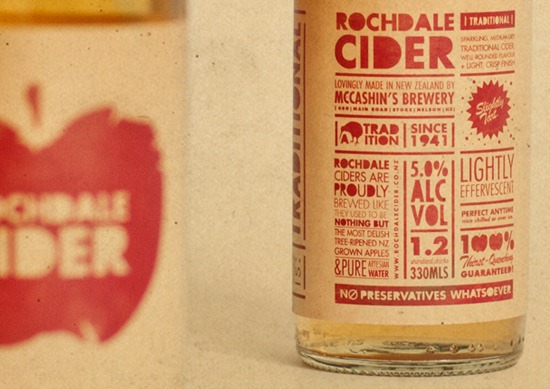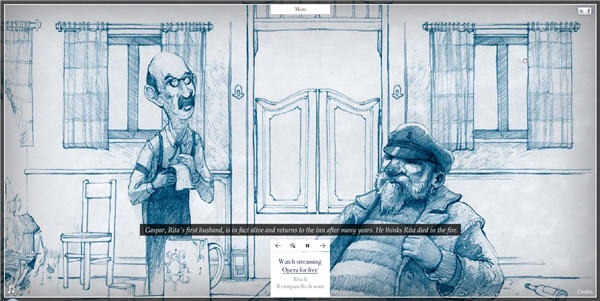Visual Harmony In Design Part 3: Thematic Reference
Last week we looked at how designers can use repetition to create visual harmony in their designs. This week we turn our attention to the concept of “thematic reference”. Thematic reference is a somewhat grandiose term used to describe how to establish connections between themes in a design. For example if you were designing a site for brides, you would most likely avoid dark drab colors, images of skulls and crossbones and harsh distorted type. That is not a suitable theme for anything related to weddings. One way to achieve visual harmony is to pick a theme and use design elements – images, type, textures, colors – that reflect that theme.
Let’s take a simple example of this in action using The Fruit Box web site. This function of this site is to let potential customers know about its service of fruit delivery. For starters, the logo features a brightly colored box of fruit. The main image on the home page is a photograph of some brightly colored, juicy fruit. The colors used in the navigation bar and the contact information at the top of the page are brightly colored orange, red and green, reminiscent of juicy fruits. So the actual content and design re-enforce each other. It all seems very simple doesn’t it? But often making a site seem simple and eye-catching can be a difficult task.
This packaging for Rochdale Cider was designed by Supply. The brief required that the rebranding should fit into a theme of history and tradition. The retro stencil-style typography complements the copy used on the label and box along with the old style apple brand mark on the front of the bottle. The natural-looking yellowed paper adds to an overall theme of nostalgia whilst still looking modern.
Opera Live has a wonderful interactive trailer on it’s web site. The artwork style conveys a theme of old times. The beautiful ink drawings and accompanying opera music echo each other. The italic text used in the captions bolster the elegant feeling of opera. All the elements come together in a harmonious way.
And that briefly sums up the concept of thematic reference in design. Next week, in the final part of this short series on harmony, we’ll look at the idea of visual echo.
Frequently Asked Questions on Thematic Reference in Design
What is the significance of thematic reference in design?
Thematic reference in design is a crucial aspect that helps in creating a cohesive and harmonious visual experience. It involves the use of a specific theme or concept as a guiding principle throughout the design process. This theme can be anything from a color scheme, a particular style, a specific era, or even a certain mood or emotion. The use of a thematic reference ensures that all elements of the design are unified and work together to convey a specific message or feeling to the viewer.
How does thematic reference differ from reference maps in design?
While both thematic reference and reference maps are used in design, they serve different purposes. A reference map is a type of map that shows the location of various features like roads, landmarks, and geographical features. On the other hand, a thematic reference in design is a concept or theme that guides the design process. It helps in creating a cohesive and harmonious visual experience by ensuring that all elements of the design are unified and work together to convey a specific message or feeling.
How can I effectively use thematic reference in my design process?
To effectively use thematic reference in your design process, you need to first identify a theme or concept that you want your design to convey. This could be anything from a specific color scheme, a particular style, a specific era, or even a certain mood or emotion. Once you have identified your theme, you should use it as a guiding principle throughout your design process. This means that all elements of your design, from the color scheme to the typography to the imagery, should be in line with your chosen theme.
Can thematic reference be used in all types of design?
Yes, thematic reference can be used in all types of design, including graphic design, interior design, fashion design, and even web design. The key is to identify a theme or concept that you want your design to convey and then use that theme as a guiding principle throughout your design process. This will ensure that all elements of your design are unified and work together to convey your chosen theme.
What are some examples of thematic reference in design?
Thematic reference in design can take many forms. For example, in interior design, a designer might use a specific era, like the Victorian era, as a thematic reference. This would guide the choice of furniture, color schemes, and decorative elements. In graphic design, a designer might use a specific color scheme as a thematic reference. This would guide the choice of colors used in the design. In fashion design, a designer might use a specific style or trend as a thematic reference. This would guide the choice of fabrics, patterns, and silhouettes.
How does thematic reference contribute to visual harmony in design?
Thematic reference contributes to visual harmony in design by ensuring that all elements of the design are unified and work together to convey a specific message or feeling. When all elements of a design are in line with a chosen theme, it creates a sense of cohesion and harmony. This makes the design more visually appealing and effective in communicating its intended message.
Can I use multiple thematic references in a single design?
While it’s possible to use multiple thematic references in a single design, it’s important to ensure that they work together to create a cohesive and harmonious visual experience. Using too many different themes can make the design feel disjointed and confusing. It’s generally best to stick to one main theme and use additional themes as sub-themes or accents.
How can I choose the right thematic reference for my design?
Choosing the right thematic reference for your design depends on several factors, including the purpose of the design, the target audience, and your personal style as a designer. You should choose a theme that aligns with the message you want to convey and appeals to your target audience. It’s also important to choose a theme that you feel comfortable working with and that fits your personal style.
What are some common mistakes to avoid when using thematic reference in design?
Some common mistakes to avoid when using thematic reference in design include choosing a theme that doesn’t align with the purpose of the design or the target audience, using too many different themes, and not applying the theme consistently throughout the design. To avoid these mistakes, it’s important to carefully choose your theme, stick to one main theme, and ensure that all elements of your design are in line with your chosen theme.
How can I improve my skills in using thematic reference in design?
Improving your skills in using thematic reference in design involves practice and continuous learning. You can start by studying successful designs that use thematic reference effectively. Analyze how the theme is applied throughout the design and how it contributes to the overall visual harmony. You can also experiment with different themes in your own designs and get feedback from others. Additionally, there are many resources available online, including tutorials, courses, and articles, that can help you learn more about this aspect of design.
Jennifer Farley is a designer, illustrator and design instructor based in Ireland. She writes about design and illustration on her blog at Laughing Lion Design.

Published in
·APIs·Authentication·Cloud·Frameworks·Laravel·Libraries·PHP·Web Services·November 3, 2016






